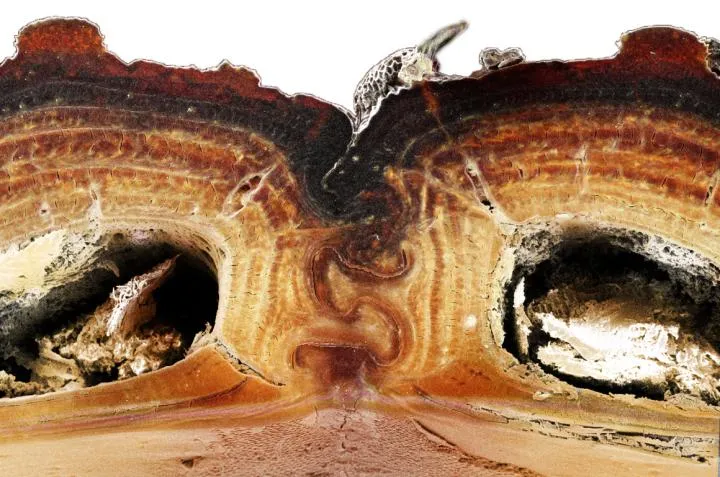Found in the desert in Southwest USA, the diabolical ironclad beetle has an exoskeleton so strong it can survive being run over. Materials scientists at the University of California, Irvine have discovered what makes this tiny titan so tough, and they have made composite materials with the same characteristics.
"The ironclad is a terrestrial beetle, so it's not lightweight and fast but built more like a little tank," said David Kisailus, professor of materials science & engineering at UCI and principal investigator on the study. "That's its adaptation: It can't fly away, so it just stays put and lets its specially designed armour take the abuse until the predator gives up."
The team studied the beetles with compression tests and found that they could withstand a force 39,000 times their own body weight. That’s like a 60kg person surviving a 2,340 tonne weight.
Read more about beetles:
- Jewel beetles’ shimmering wings are actually a form of camouflage
- Beetle species named in honour of Greta Thunberg's environmental activism
The insect’s remarkable strength lies in its elytra. In flying beetles, the elytra are hardened forewings that close over their hind wings – which do the flying – and protect them from bacteria and damage. In the diabolical ironclad beetle, the elytra have fused together, forming a tough shield.
The researchers studied the elytra with a combination of microscopy and spectroscopy. They found that it is made up of a protein matrix and layers of chitin, a fibrous material often found in insects’ exoskeletons. Compared to a flying beetle, the ironclad’s elytra had about 10 per cent more protein by weight.§
They also looked at how the two halves of the elytra were attached – known as the medial suture. The join looks remarkably like interlocking jigsaw pieces. However, they don’t behave like you might expect when the beetle is compressed.

"When you break a puzzle piece, you expect it to separate at the neck, the thinnest part," said Kisailus. "But we don't see that sort of catastrophic split with this species of beetle. Instead, it delaminates, providing for a more graceful failure of the structure." That is, the layered structure of the chitin saves the day: instead of suddenly breaking, the layers slowly fracture and come apart.
Kisailus and his team have taken inspiration from these remarkable beetles to design a biomimetic composite material with the same interlocking pieces. When they joined the material to an aluminium coupling, they found that it was much stronger and tougher than standard fasteners.
The team hope that this could be used in aircraft to join segments together without the weak points that traditional rivets and fasteners introduce.
"This study really bridges the fields of biology, physics, mechanics and materials science toward engineering applications, which you don't typically see in research," Kisailus said.
Reader Q&A: Why do some insects look metallic?
Asked by: Rebecca Walker
Many insects, particularly scarab and jewel beetles, have vivid, metallic green, blue or gold colouration. This effect doesn’t come from pigments, but is an example of ‘structural colouration’.
Microscopic ridges and transparent layers on the surface of a beetle’s carapace act as an array of lenses that direct different wavelengths of light in such a way that some colours cancel out and others are amplified – the rainbow effect on a DVD is similarly caused by the microscopic pits on its surface.
This metallic sheen may have evolved because it offers bright colours that can serve as a mating signal over long distances. Alternatively, some researchers have suggested that it might mimic the appearance of raindrops on leaves, helping to camouflage the beetles.
The ridges and layers may also take less energy to grow than metabolically expensive pigment molecules – particularly important for insects because they regularly shed and regrow their outer skin.
Read more:
